Metal decorative mesh offers a wide range of creative possibilities for architects, interior designers, and homeowners. Its ability to combine aesthetic appeal with practicality makes it a popular choice in both residential and commercial projects. Whether used as wall coverings, room dividers, ceiling panels, or exterior facades, metal decorative mesh adds character and depth to any space.
Types of Metal Decorative Mesh
Metal decorative mesh comes in various types, each with its own distinct characteristics and applications. Understanding the different types can help in selecting the most suitable mesh for a specific design project.
Woven Metal Mesh
Woven metal mesh is created by interweaving metal wires in an over-and-under pattern. This type of mesh offers excellent structural strength and flexibility, allowing it to be used for large-scale applications. It comes in different weave patterns, such as plain weave, twill weave, and Dutch weave, offering a wide range of visual effects.
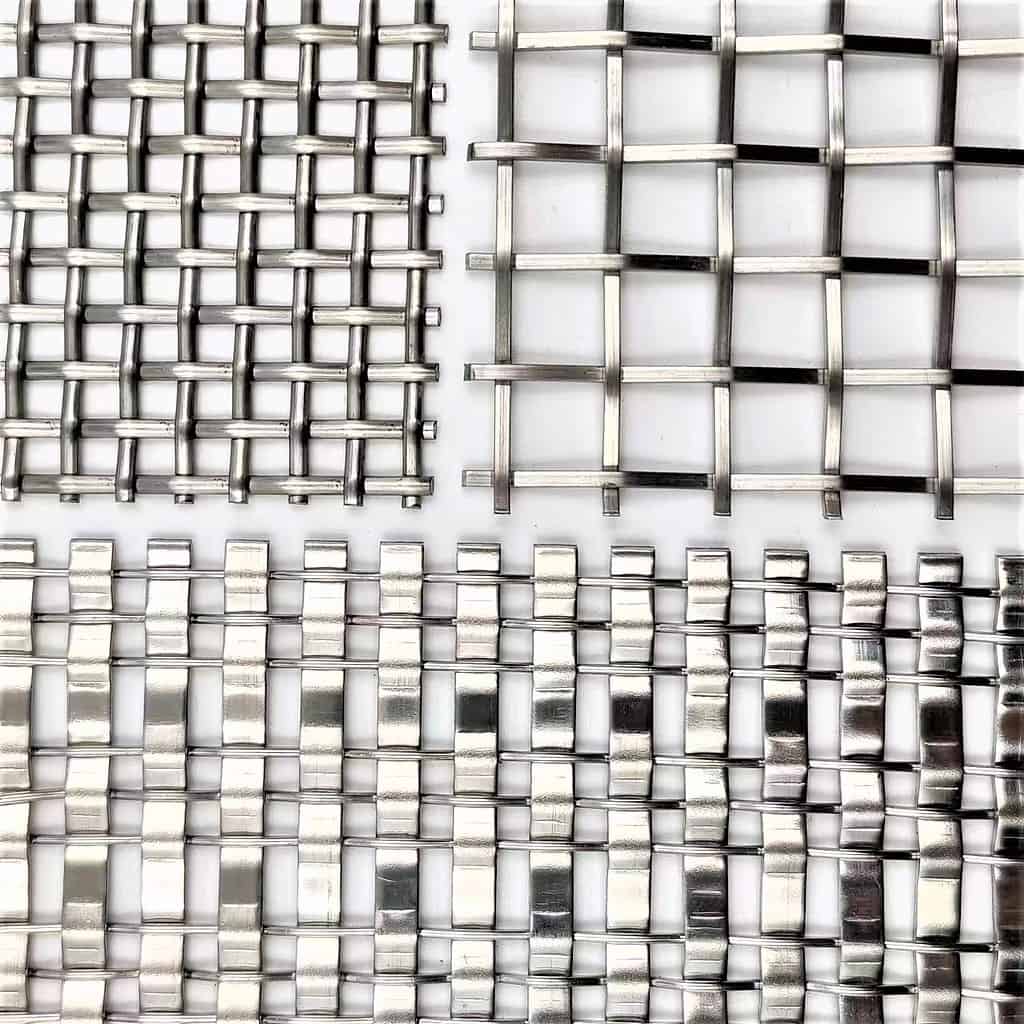
Expanded Metal Mesh
Expanded metal mesh is produced by cutting and stretching a metal sheet, creating a mesh-like pattern with diamond-shaped openings. This type of mesh is lightweight yet strong, making it suitable for applications where durability and ventilation are important. It can be used for decorative purposes, as well as for safety grilles, sunscreens, and architectural facades.
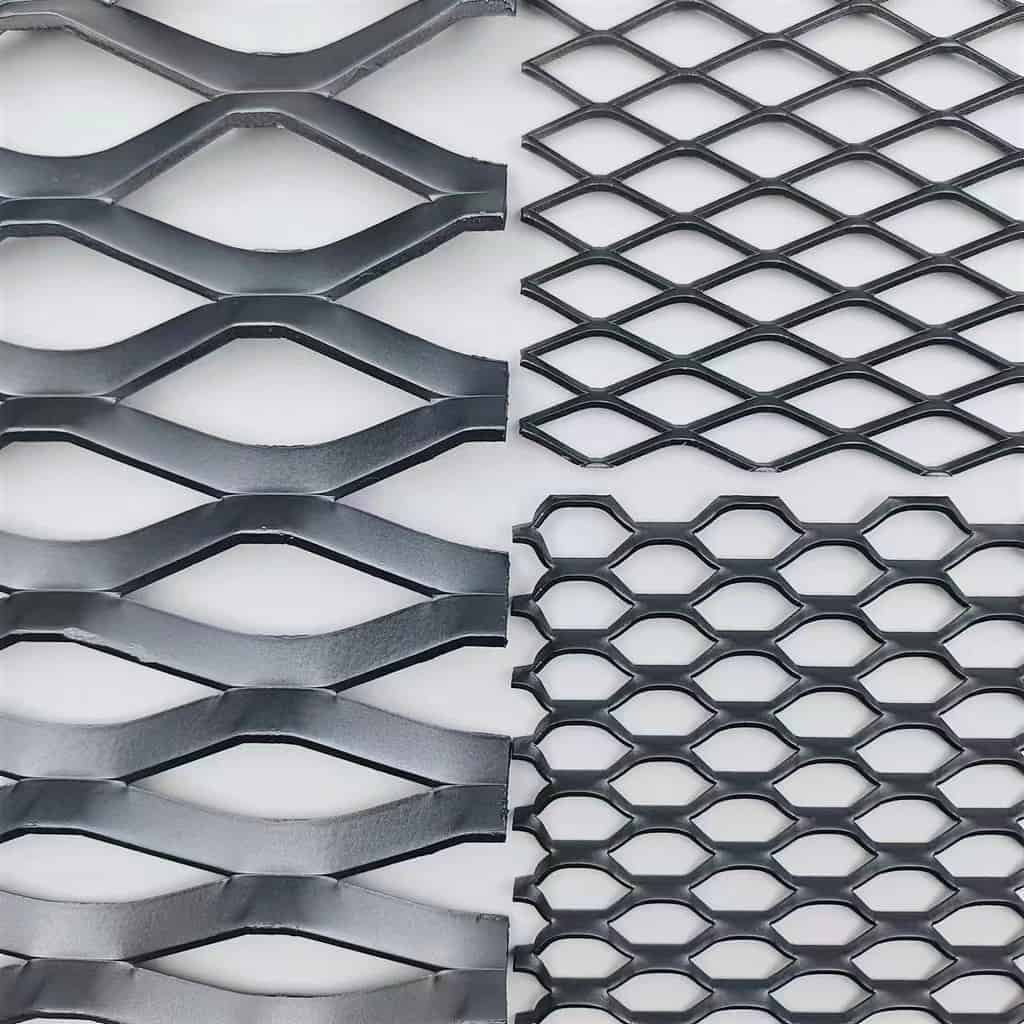
Perforated Metal Mesh
Perforated metal mesh features evenly spaced holes or perforations that are punched or drilled into a metal sheet. This type of mesh offers excellent airflow, light transmission, and acoustic properties. It is commonly used for decorative panels, signage, privacy screens, and ceiling tiles.
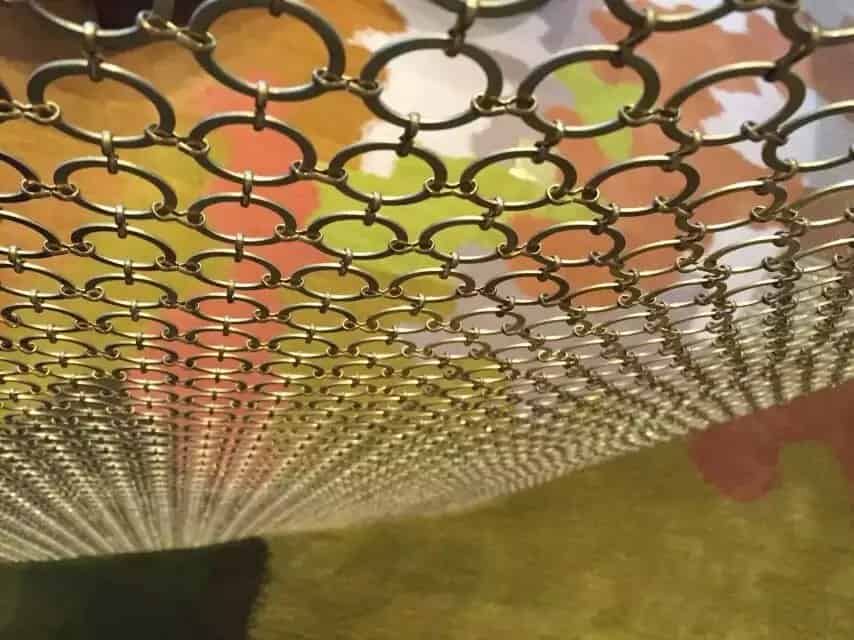
Wire Mesh
Wire mesh is made by intertwining metal wires to form a grid-like pattern. It is available in various mesh sizes and wire diameters, allowing for different levels of openness and transparency. Wire mesh is often used for architectural applications, such as balustrades, staircases, and railing systems.

Applications of Metal Decorative Mesh
Metal decorative mesh finds extensive use in both interior and exterior design, offering a wide range of applications that enhance the visual appeal and functionality of architectural spaces.
Interior Design
In interior design, metal decorative mesh can transform ordinary spaces into stunning works of art. It can be used in the following ways:
- Wall coverings: Metal mesh panels can be installed as decorative wall coverings, adding texture and visual interest to plain surfaces. They create a unique play of light and shadow, giving depth to the walls.
- Room dividers: Metal mesh partitions or screens serve as stylish room dividers, allowing for separation of spaces while maintaining an open and airy feel. The mesh pattern provides partial privacy while still allowing light and airflow.
- Ceiling panels: Metal decorative mesh can be installed as suspended ceiling panels, adding a modern and sophisticated touch to any space. It creates a captivating visual effect when combined with strategically placed lighting.

Exterior Design
In exterior design, metal decorative mesh not only adds aesthetic value but also serves functional purposes such as security and sun control. It can be used in the following ways:
- Facades: Metal mesh facades are a popular choice in contemporary architecture. They can be used to cover entire building exteriors or specific sections, creating a striking visual impact and improving the building’s energy efficiency.
- Balcony railings: Metal decorative mesh is an excellent material for balcony railings, offering both safety and aesthetics. The mesh openings allow for unobstructed views while providing a secure barrier.
- Security screens: Metal mesh screens are commonly used as security measures for doors and windows. They provide protection against intruders while allowing for ventilation and natural light.
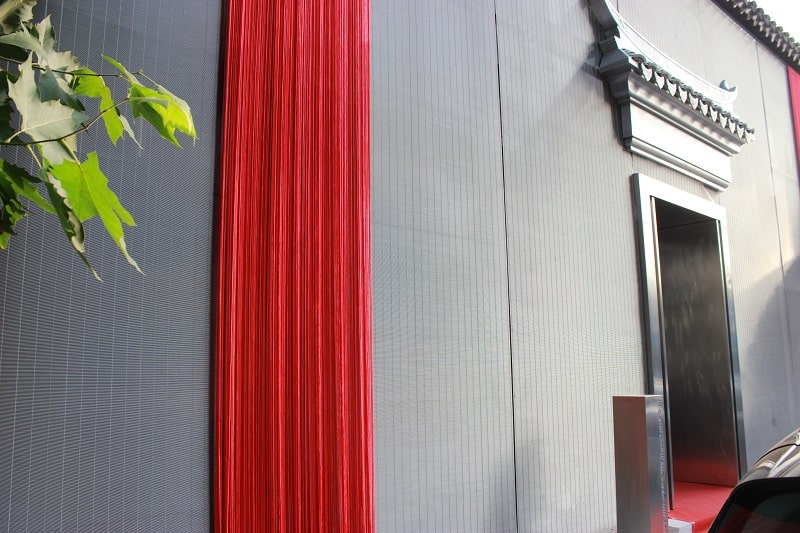
Benefits of Metal Decorative Mesh
Metal decorative mesh offers several benefits that contribute to its popularity in architectural design:
A. Aesthetic Appeal: Metal mesh adds a touch of elegance and sophistication to any space. Its unique patterns and textures create visual interest and make a lasting impression.
B. Versatility: Metal decorative mesh is available in various patterns, materials, and finishes, allowing for endless design possibilities. It can be customized to suit different styles and project requirements.
C. Functionality: Metal mesh serves functional purposes beyond its decorative value. It can control light and airflow, provide privacy, and enhance safety and security.
D. Durability: Metal decorative mesh is highly durable and resistant to corrosion, making it suitable for both indoor and outdoor applications. It maintains its appearance even in demanding environments.
E. Light and Airflow: The open areas in metal mesh allow for the passage of light and air, creating a well-ventilated and naturally illuminated environment. This contributes to energy efficiency and occupant comfort.

Considerations for Choosing Metal Decorative Mesh
When selecting metal decorative mesh for a design project, several factors should be considered to ensure the desired aesthetic and functional outcomes:
A. Material Selection: Different metals, such as stainless steel, aluminum, brass, or copper, offer varying aesthetic qualities and levels of durability. The choice of material should align with the project requirements and desired appearance.
B. Mesh Pattern and Openness: The pattern and openness of the mesh determine the visual effect, level of privacy, and airflow. It is important to select a mesh pattern and openness that harmonizes with the overall design concept.
C. Size and Scale: The size of the mesh openings and the scale of the mesh panels should be proportionate to the surrounding elements. Consideration should be given to the desired level of transparency, visual impact, and functionality.
D. Color and Finish: Metal decorative mesh can be finished in different colors, such as natural metallic tones or custom coatings. The choice of color and finish should complement the overall design scheme and desired aesthetic.

Installation and Maintenance of Metal Decorative Mesh
Proper installation and maintenance are essential to ensure the longevity and performance of metal decorative mesh:
A. Installation Methods: Metal mesh can be installed using various methods, including direct fixing, tensioning systems, or framing systems. The chosen installation method should align with the project requirements and the structural considerations of the building.
B. Cleaning and Maintenance: Metal decorative mesh is relatively low-maintenance. Regular cleaning with non-abrasive cleaners and soft brushes or cloths is usually sufficient to remove dust and dirt. It is important to avoid harsh chemicals or abrasive materials that could damage the mesh or its finish.
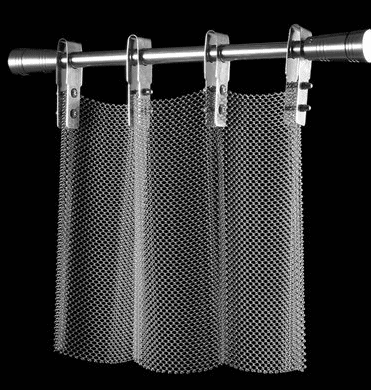
Trends in Metal Decorative Mesh
The use of metal decorative mesh in design projects is continually evolving, with new trends emerging. Some current trends include:
A. Geometric Patterns: Mesh panels featuring geometric patterns, such as hexagons, triangles, or chevron shapes, are increasingly popular. They add a contemporary and dynamic element to architectural spaces.
B. Nature-inspired Designs: Mesh patterns inspired by natural elements, such as leaves, waves, or organic shapes, bring a sense of harmony and tranquility to interior and exterior spaces.
C. Customization Options: Designers and manufacturers are increasingly offering customization options for metal decorative mesh. This allows for the creation of unique patterns, sizes, and finishes that meet specific project requirements.
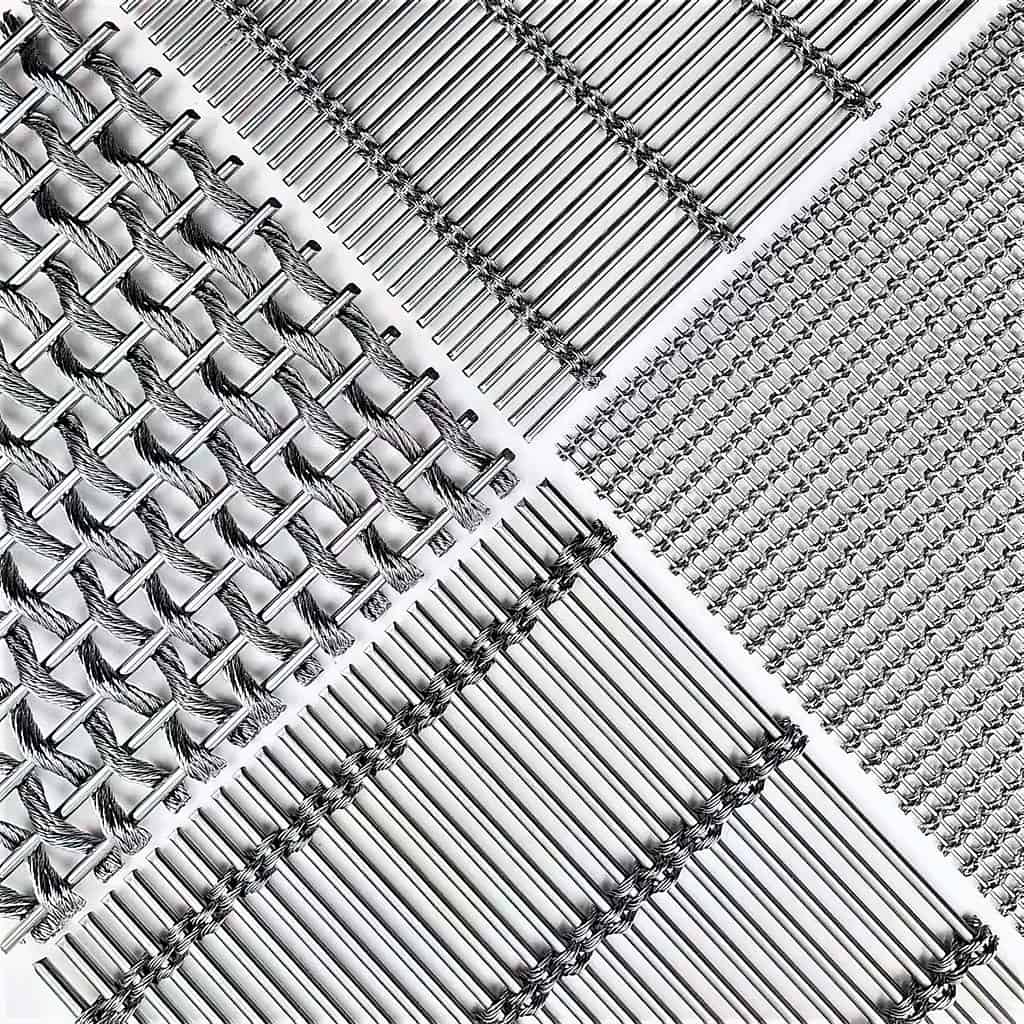
Case Studies: Examples of Metal Decorative Mesh in Design Projects
To showcase the versatility and impact of metal decorative mesh, here are two case studies highlighting its use in design projects:
A. Residential Spaces: In a modern residential home, metal decorative mesh was used as a room divider between the living area and the dining area. The mesh panels added a touch of elegance and separation while maintaining an open and airy feel. The pattern and color of the mesh complemented the overall interior design scheme.
B. Commercial Spaces: In a commercial office building, metal decorative mesh was installed as a facade treatment. The mesh panels created a visually striking exterior, allowing for natural light and airflow while adding a sense of privacy. The geometric pattern of the mesh panels added a contemporary and dynamic element to the building’s design.
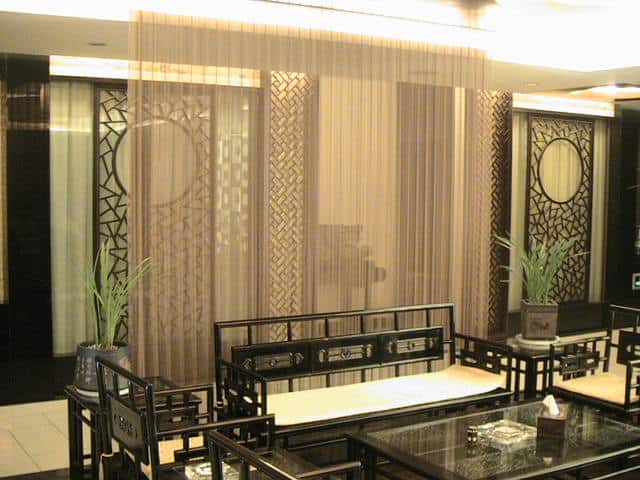
Conclusion
Metal decorative mesh is a versatile material that adds a unique blend of aesthetics and functionality to interior and exterior design projects. Its various types, applications, and benefits make it a popular choice among architects, interior designers, and homeowners. By considering factors such as material selection, mesh pattern, and installation methods, designers can unleash the full creative potential of metal decorative mesh. With its enduring appeal and timeless elegance, metal decorative mesh continues to shape the future of architectural design.
FAQs
- Can metal decorative mesh be used in outdoor applications? Yes, metal decorative mesh is suitable for both indoor and outdoor applications. It is commonly used as facades, balcony railings, and security screens in outdoor spaces.
- Is metal decorative mesh suitable for high-traffic areas? Yes, metal decorative mesh is durable and can withstand high-traffic areas. However, it is important to choose a mesh type and material that align with the specific requirements of the space.
- How do I choose the right mesh pattern for my project? The choice of mesh pattern depends on the desired aesthetic, level of transparency, and functional requirements of the project. Consider the overall design concept and the visual impact you want to achieve.
- Can metal decorative mesh be used as a security measure? Yes, metal decorative mesh can serve as a security measure when used as screens for doors and windows. The mesh provides protection while allowing for ventilation and natural light.
- What maintenance is required for metal decorative mesh? Metal decorative mesh requires regular cleaning to remove dust and dirt. It is important to use non-abrasive cleaners and avoid harsh chemicals or abrasive materials that could damage the mesh or its finish.
- Can metal decorative mesh be custom-designed to fit specific spaces? Yes, metal decorative mesh can be custom-designed to fit specific spaces. Designers and manufacturers offer customization options for mesh patterns, sizes, and finishes to meet project requirements and create unique design solutions.
